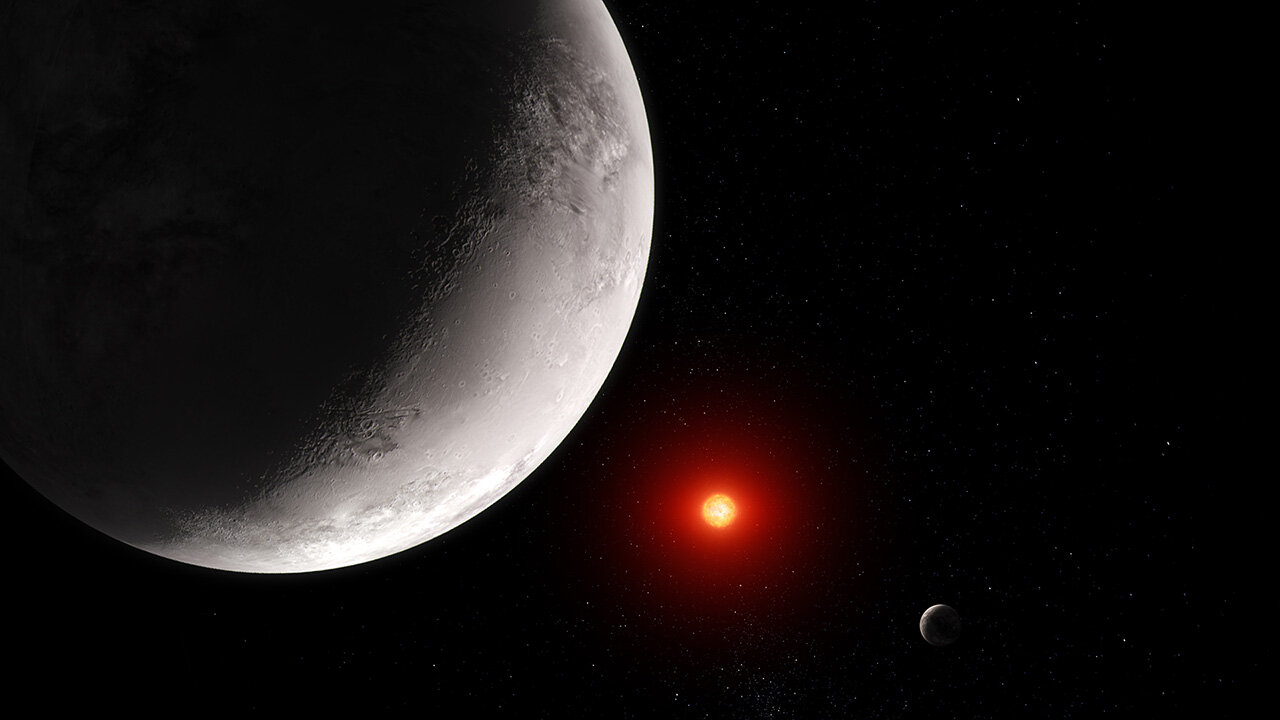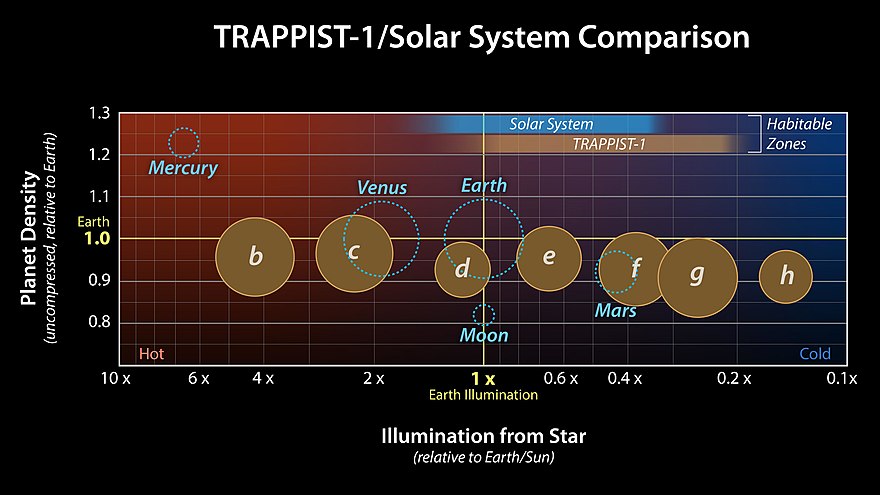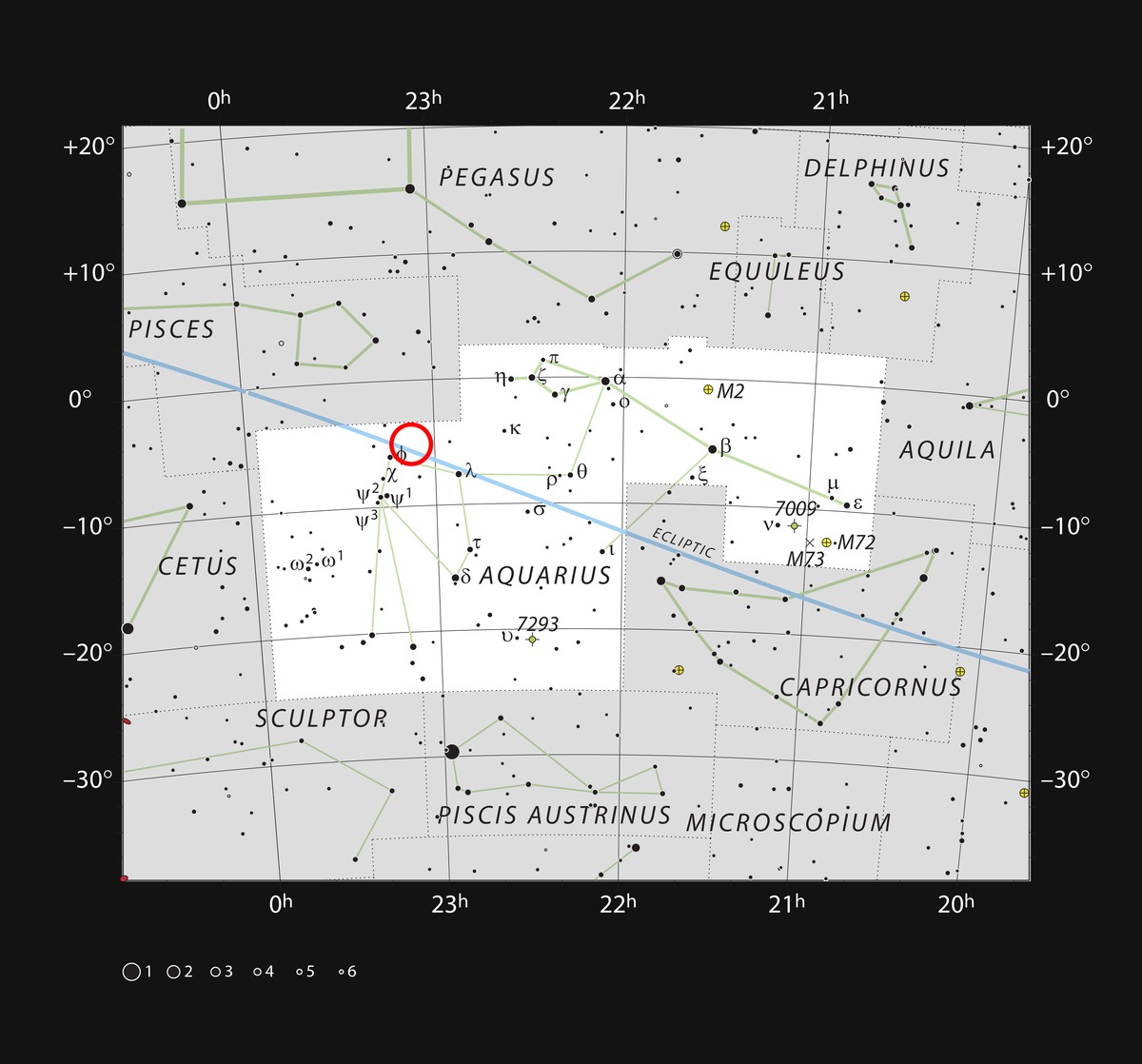- Mar 17, 2015
- 17,202
- 9,205
- Country
- United States
- Faith
- Christian
- Marital Status
- Married
First an update: we recently learned about the 2nd nearest planet to the red dwarf star Trappist-1 (remember? It's the red dwarf star of breathless headlines in 2017 like
"Earth like": Seven Earth-Like Planets Orbit One Nearby Star
"Wonderful": Wonderful potentially habitable worlds around TRAPPIST-1
"Earth like": 7 Earth-Like Worlds Orbit a Star So Cool, You Didn’t Know It Existed)
-- that 2nd innermost planet, Trappist-1 c -- also looks like it has little or no atmosphere, just like Trappist-1 b:
"Unfortunately for those hoping that the TRAPPIST-1 system is a true analog to our own, the results are a bit disappointing. While TRAPPIST-1 c is roughly the same size and mass as Venus and receives the same amount of radiation from its star, it appears unlikely to have the same thick carbon dioxide atmosphere. This indicates that the planet, and perhaps the system as a whole, may have formed with very little water. The result is the latest in the quest to determine whether planetary atmospheres can survive the violent environs of a red dwarf star.
An international team of researchers has used NASA's James Webb Space Telescope to calculate the amount of heat energy coming from the rocky exoplanet TRAPPIST-1 c. The result suggests that the planet's atmosphere—if it exists at all—is extremely thin.

 phys.org
phys.org
This was not surprising, for well understood reasons I explained in a thread about exactly that (see post #1 here): Exoplanets Trappist-1 b and c (the 2 innermost planets): Little or No Atmosphere on both ....
But...as we move farther away from the star to look at more distant planets, it gets more interesting, because the devastating strength of the red dwarf star's stellar wind and flare strength falls off with distance, giving the more distant planets a gradually improving chance to retain atmosphere. (though they might turn out to have none also of course)
Interestingly, this summer JWST will be observing Trappist-1 e in the system, significantly further out.
Trappist-1 e is in the middle of the possible liquid water zone -- the distance from a star where it's thought liquid water could possibly exist on a planet which is warmed by only stellar radiation (and which has an atmosphere).


 en.wikipedia.org
en.wikipedia.org
It will be quite interesting to see if any planets of the 7 (even 1 or 2 or 3) have an atmosphere, and the odds improve as we move away from the star.
I'm not saying it's likely!
It's yet to be seen.
When rolling dice, sometimes unlikely rolls come up. If one of these planets has a significant magnetic field, it could improve the odds.... that we can't rule out (yet) whether we could find something more favorable than a planet without any atmosphere, or with a thin atmosphere like dessicated Mars. Of course, there's possibilities like the overwhelmingly oppressive suffocating atmosphere of ~900F Venus.
But anything will be interesting. Even another atmosphere free planet, for that matter.
We don't know what we will find, but we will be learning a lot about other small rocky worlds around red dwarf stars that are Earth-sized, and that will be interesting.
"Earth like": Seven Earth-Like Planets Orbit One Nearby Star
"Wonderful": Wonderful potentially habitable worlds around TRAPPIST-1
"Earth like": 7 Earth-Like Worlds Orbit a Star So Cool, You Didn’t Know It Existed)
-- that 2nd innermost planet, Trappist-1 c -- also looks like it has little or no atmosphere, just like Trappist-1 b:
"Unfortunately for those hoping that the TRAPPIST-1 system is a true analog to our own, the results are a bit disappointing. While TRAPPIST-1 c is roughly the same size and mass as Venus and receives the same amount of radiation from its star, it appears unlikely to have the same thick carbon dioxide atmosphere. This indicates that the planet, and perhaps the system as a whole, may have formed with very little water. The result is the latest in the quest to determine whether planetary atmospheres can survive the violent environs of a red dwarf star.
An international team of researchers has used NASA's James Webb Space Telescope to calculate the amount of heat energy coming from the rocky exoplanet TRAPPIST-1 c. The result suggests that the planet's atmosphere—if it exists at all—is extremely thin.

Webb rules out thick carbon dioxide atmosphere for rocky exoplanet
Infrared measurements of TRAPPIST-1 c indicate that it is probably not as Venus-like as once imagined.
This was not surprising, for well understood reasons I explained in a thread about exactly that (see post #1 here): Exoplanets Trappist-1 b and c (the 2 innermost planets): Little or No Atmosphere on both ....
But...as we move farther away from the star to look at more distant planets, it gets more interesting, because the devastating strength of the red dwarf star's stellar wind and flare strength falls off with distance, giving the more distant planets a gradually improving chance to retain atmosphere. (though they might turn out to have none also of course)
Interestingly, this summer JWST will be observing Trappist-1 e in the system, significantly further out.
Trappist-1 e is in the middle of the possible liquid water zone -- the distance from a star where it's thought liquid water could possibly exist on a planet which is warmed by only stellar radiation (and which has an atmosphere).


TRAPPIST-1 - Wikipedia
It will be quite interesting to see if any planets of the 7 (even 1 or 2 or 3) have an atmosphere, and the odds improve as we move away from the star.
I'm not saying it's likely!
It's yet to be seen.
When rolling dice, sometimes unlikely rolls come up. If one of these planets has a significant magnetic field, it could improve the odds.... that we can't rule out (yet) whether we could find something more favorable than a planet without any atmosphere, or with a thin atmosphere like dessicated Mars. Of course, there's possibilities like the overwhelmingly oppressive suffocating atmosphere of ~900F Venus.
But anything will be interesting. Even another atmosphere free planet, for that matter.
We don't know what we will find, but we will be learning a lot about other small rocky worlds around red dwarf stars that are Earth-sized, and that will be interesting.
Last edited:
